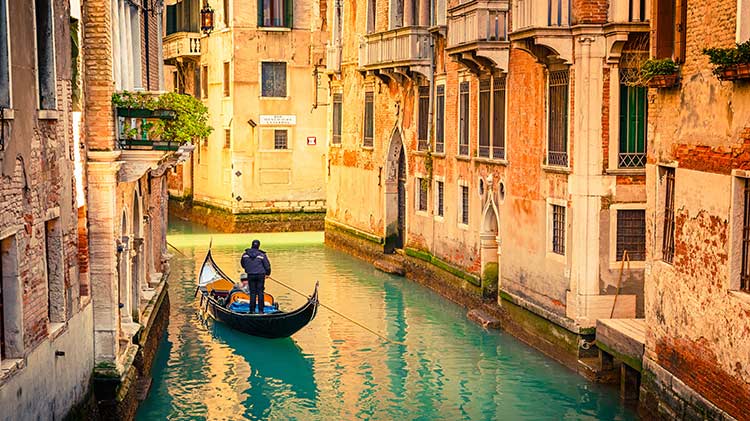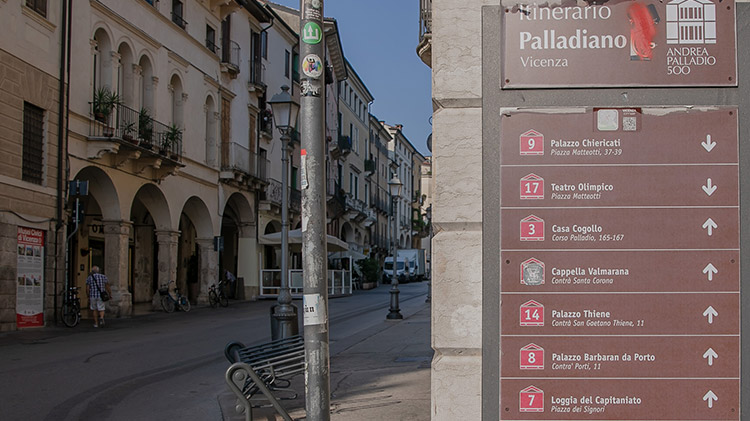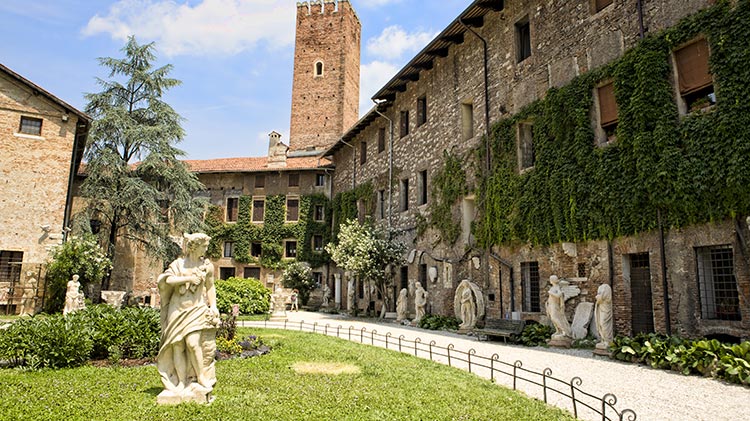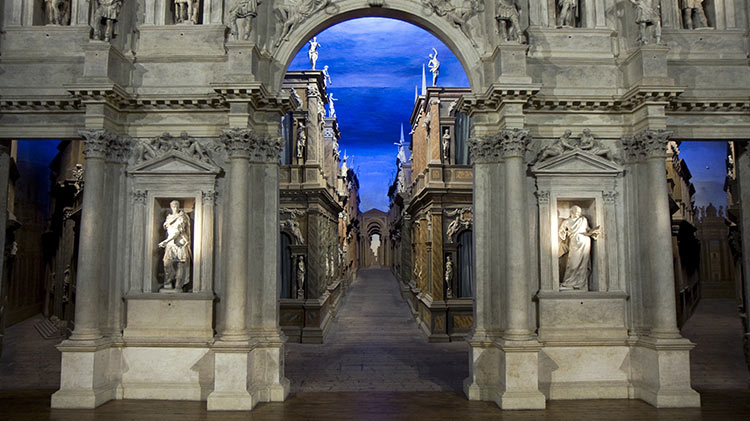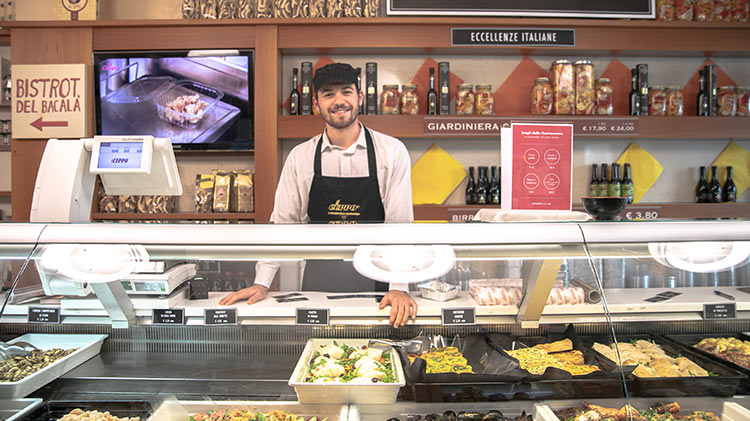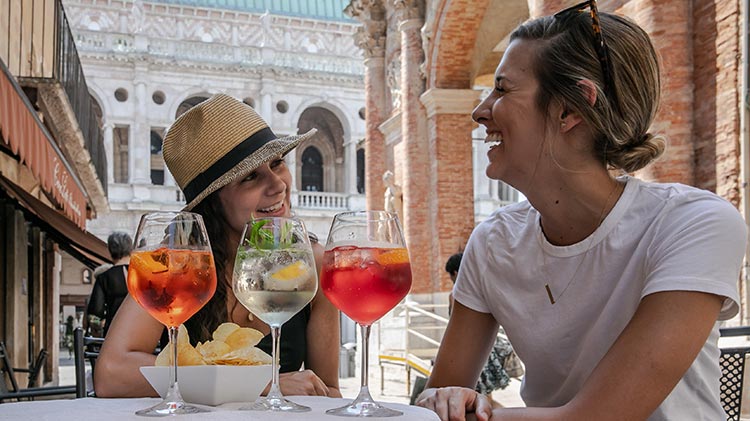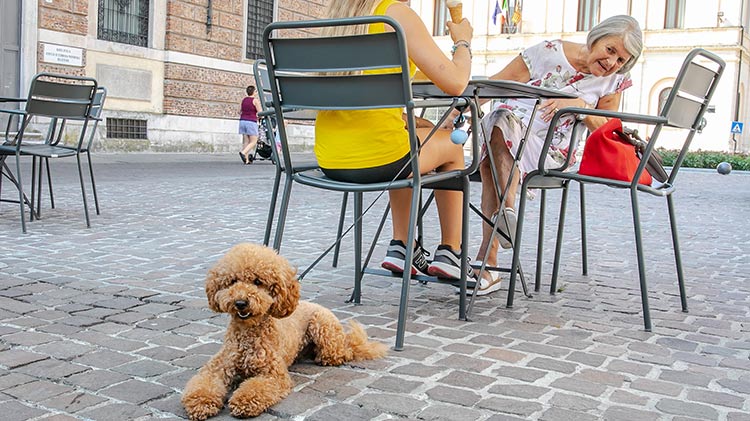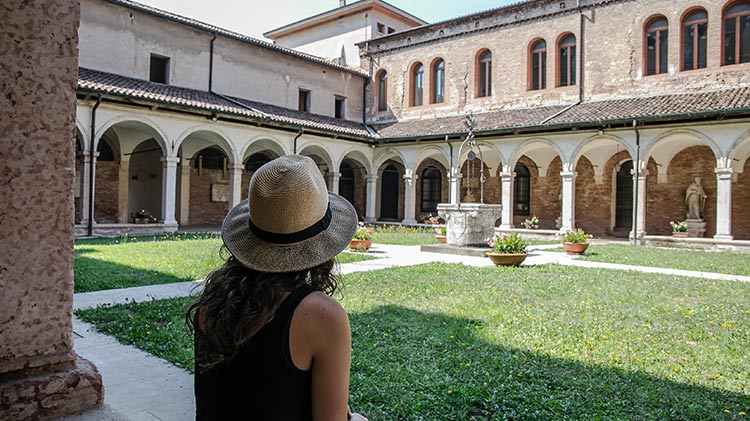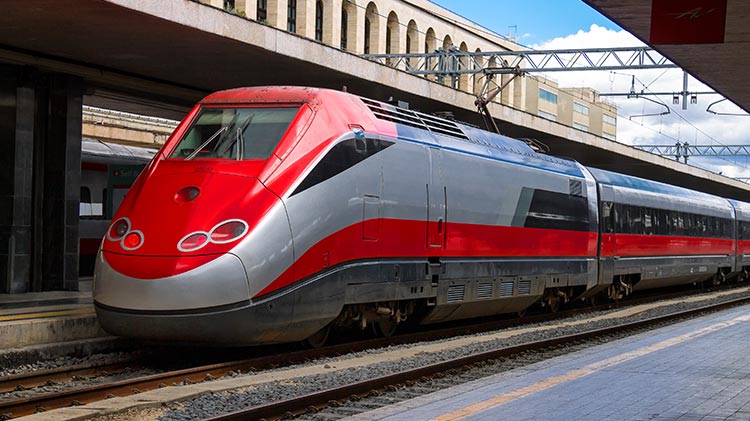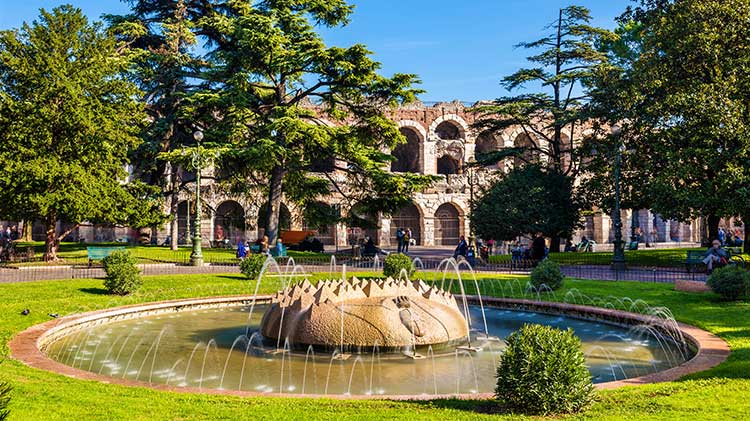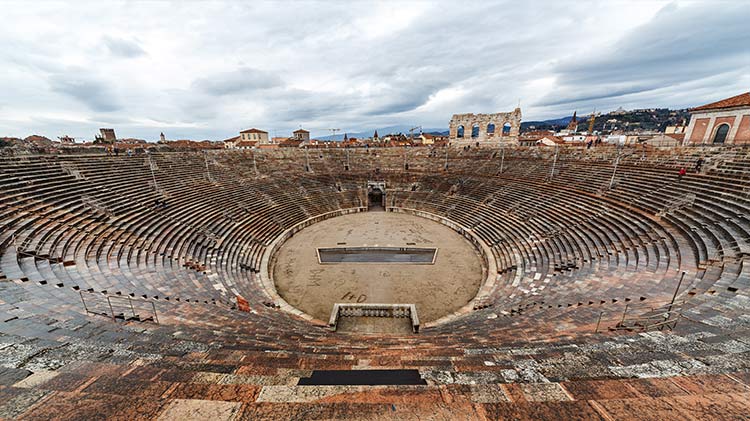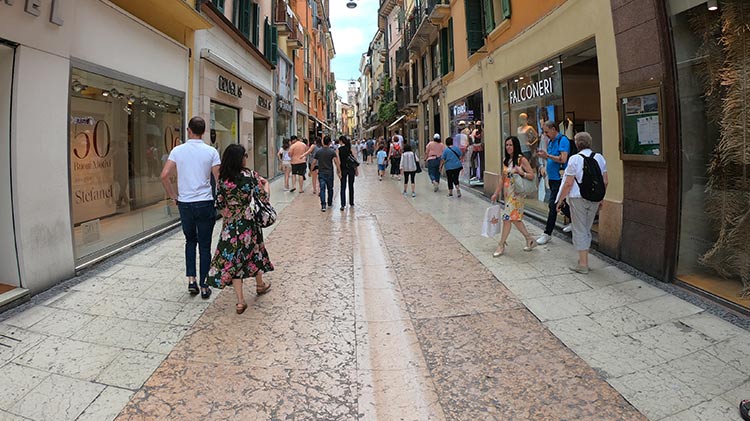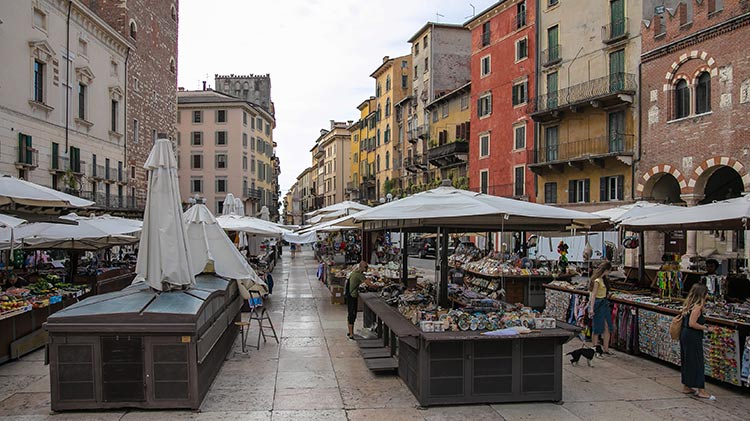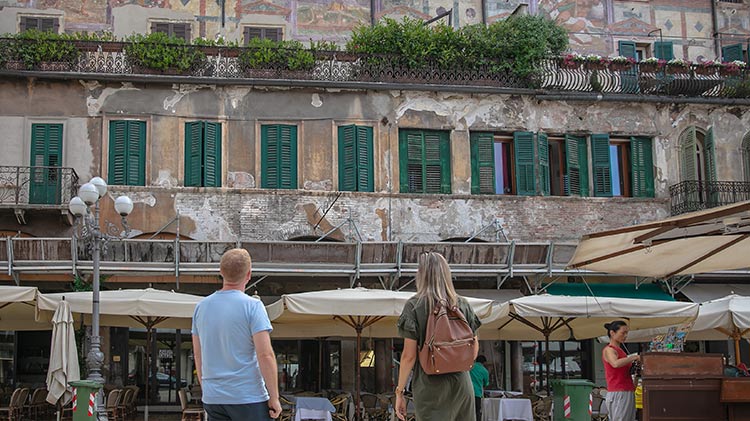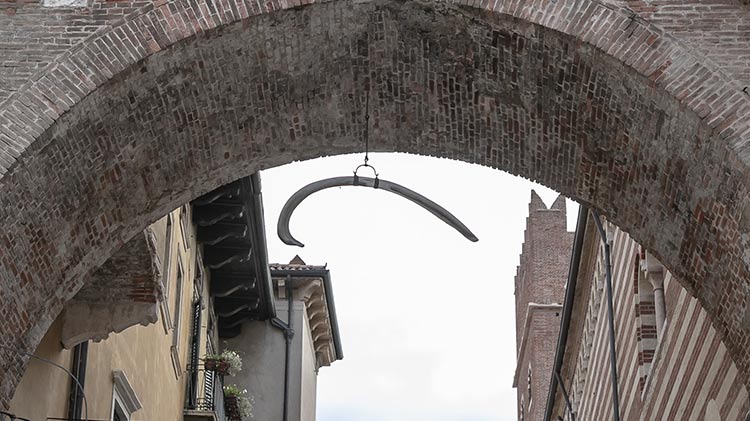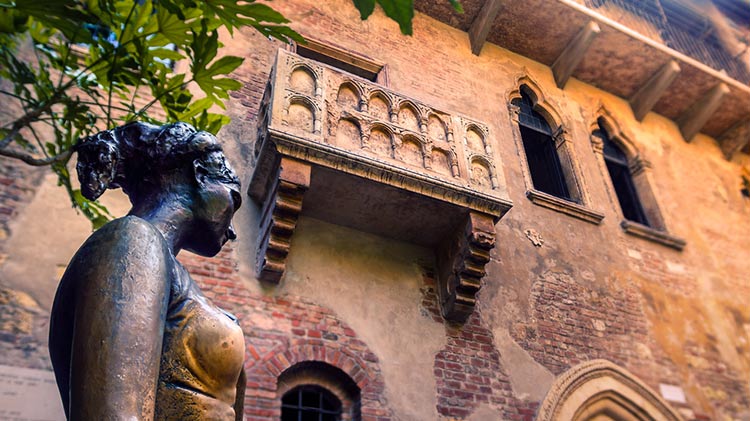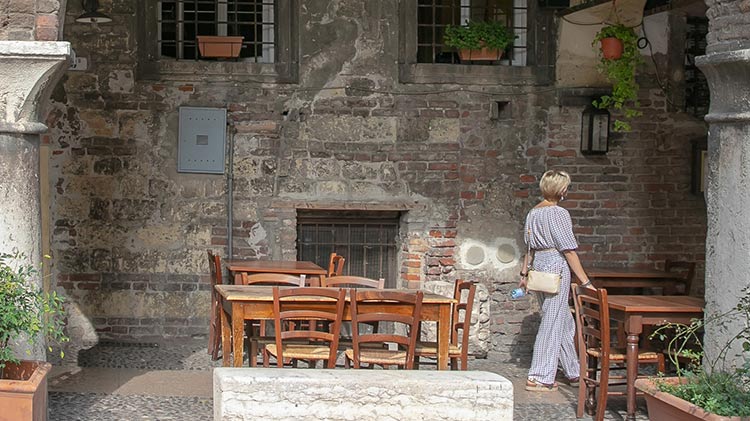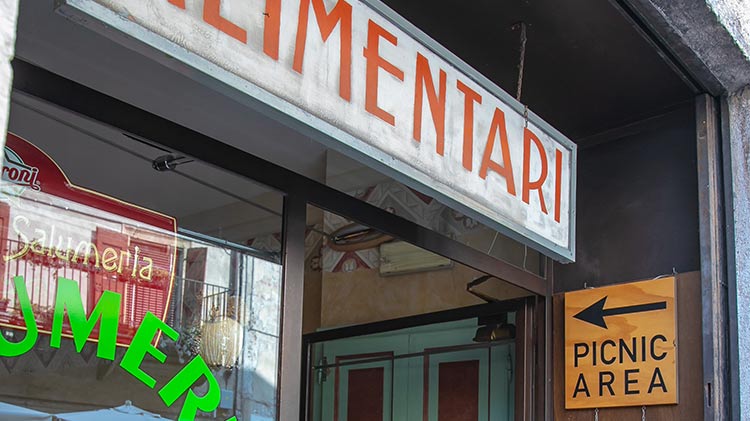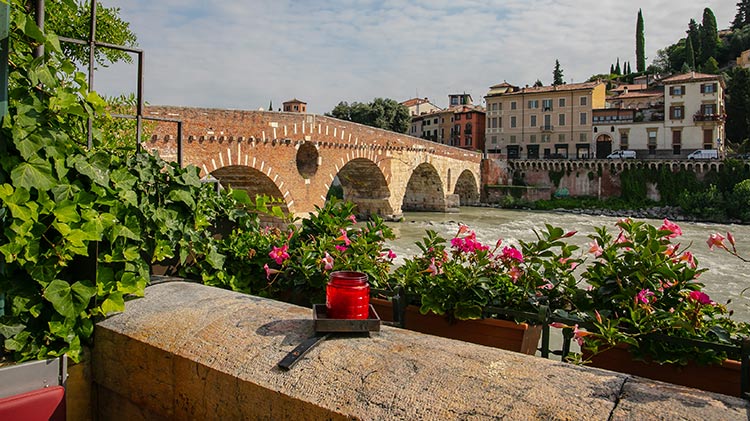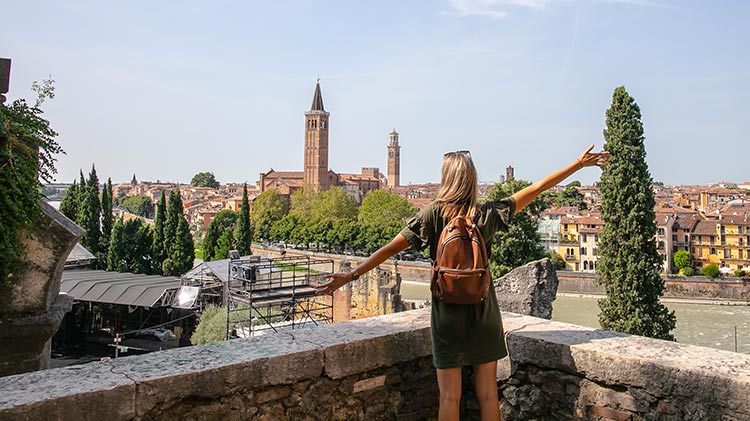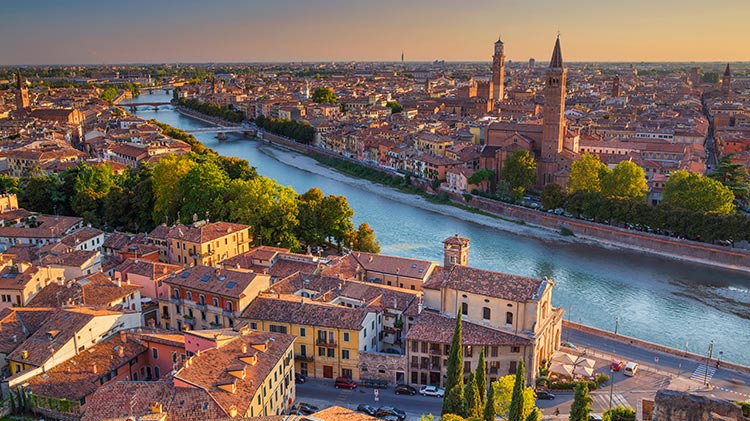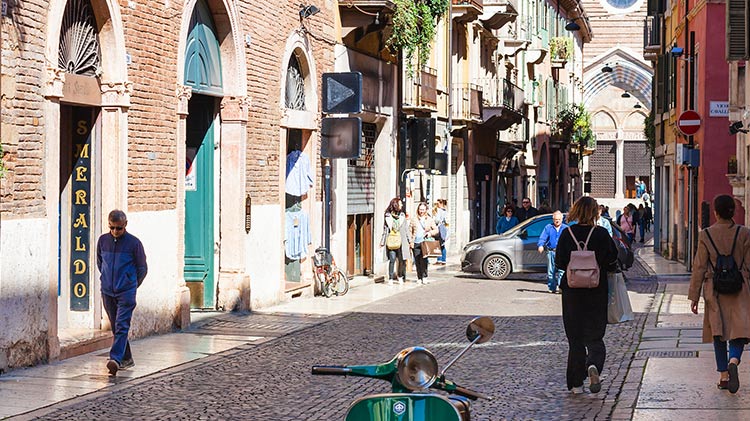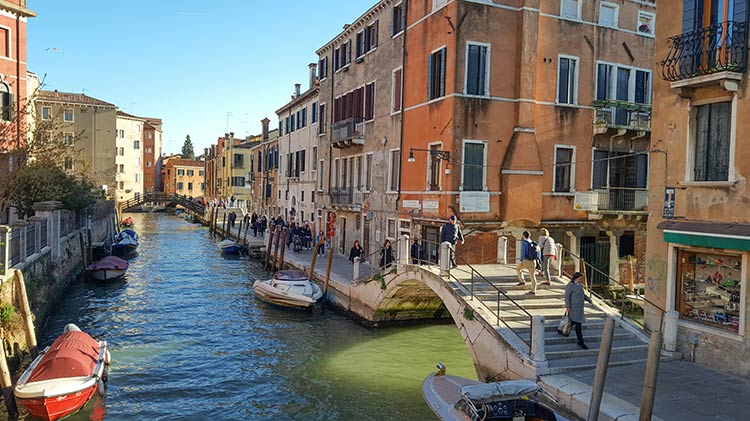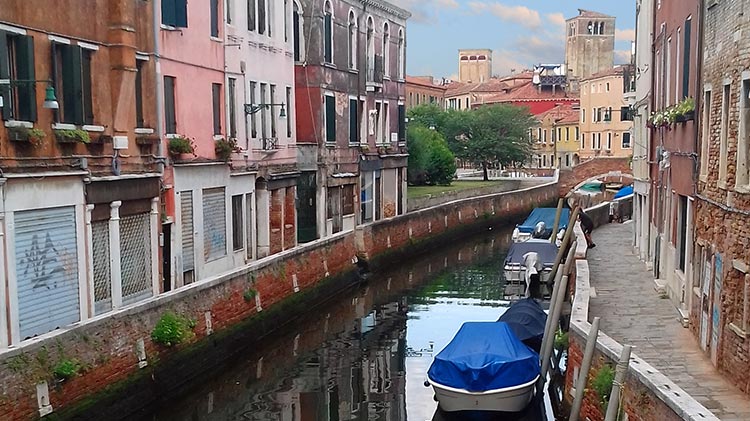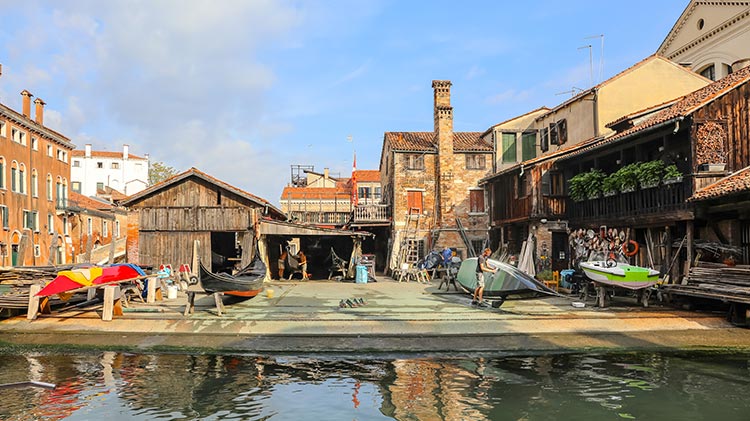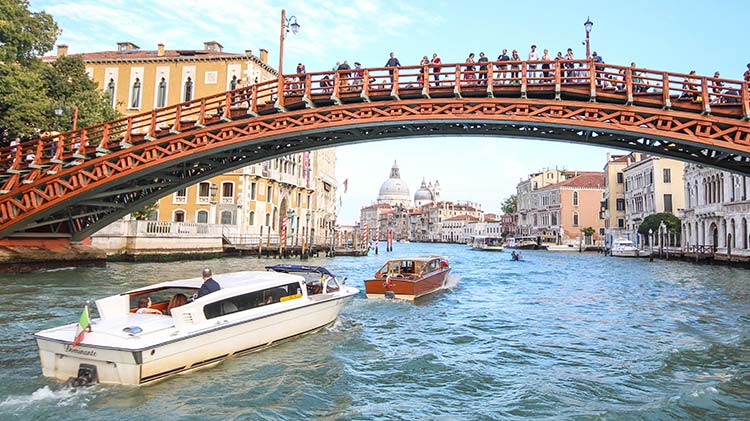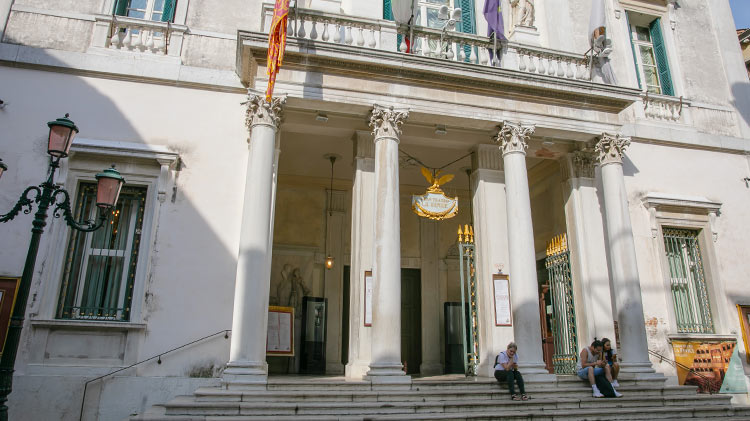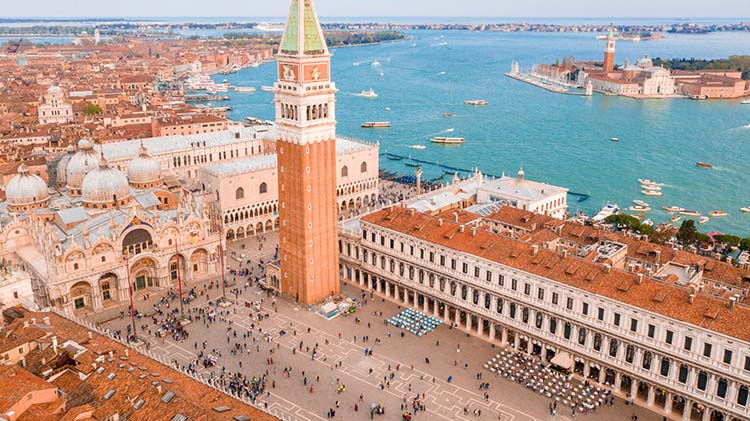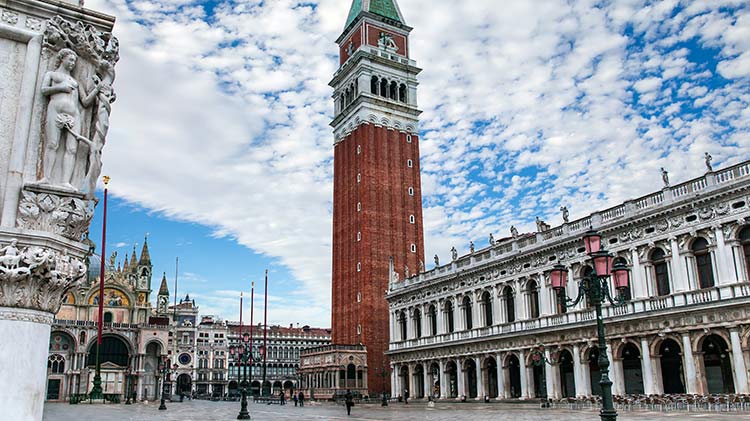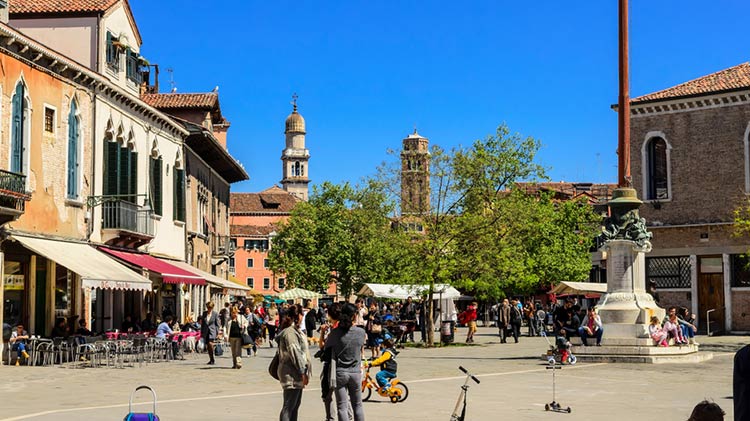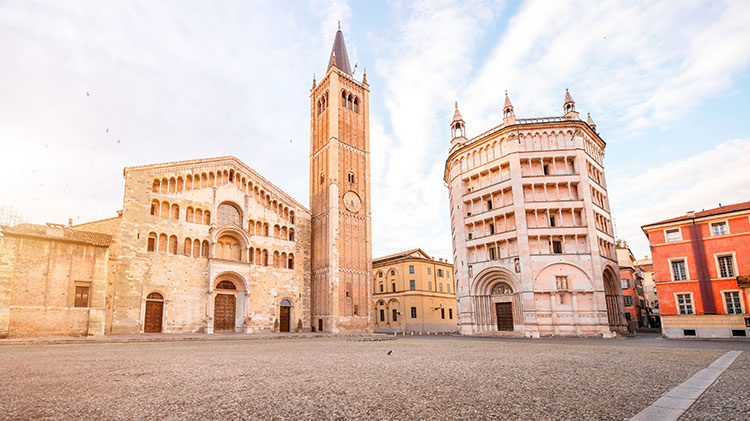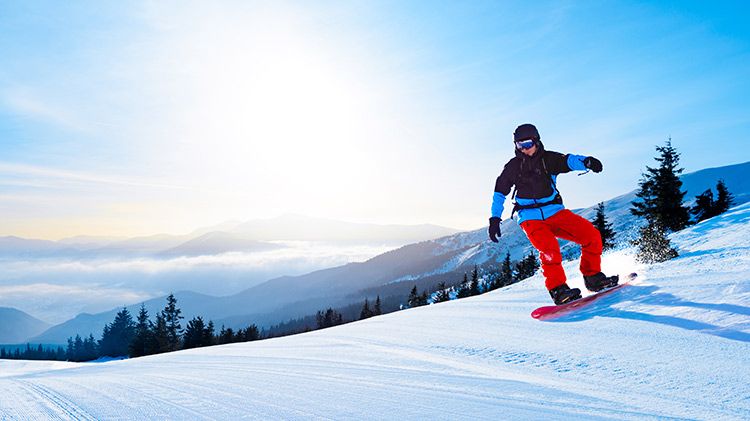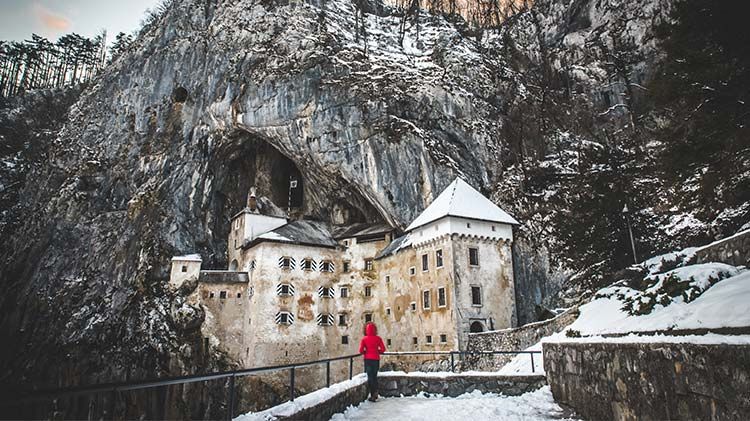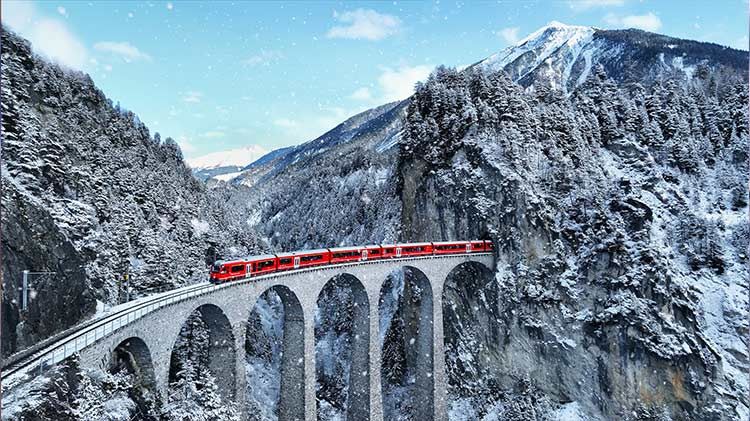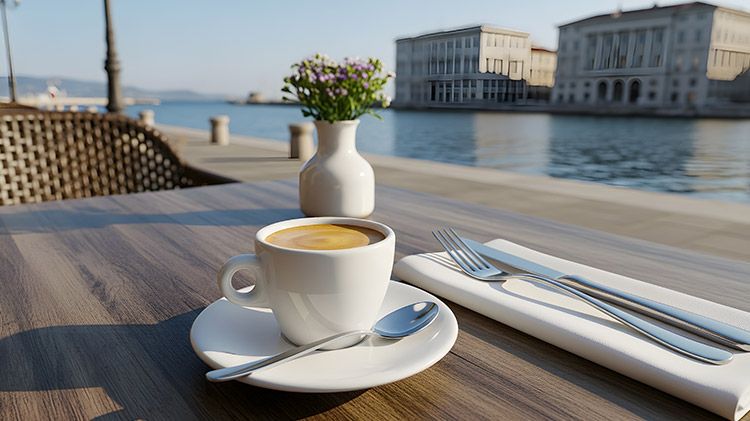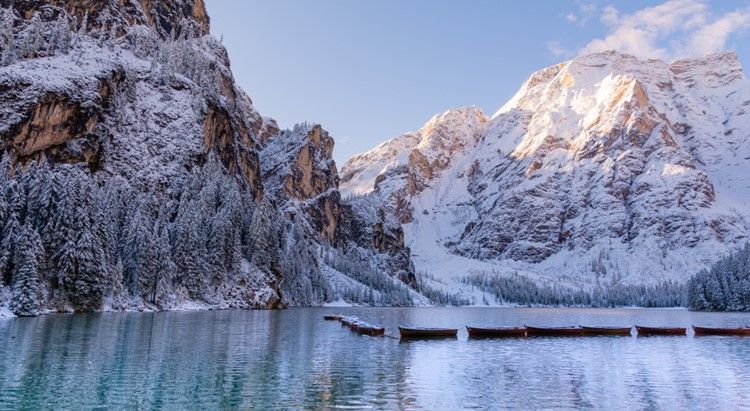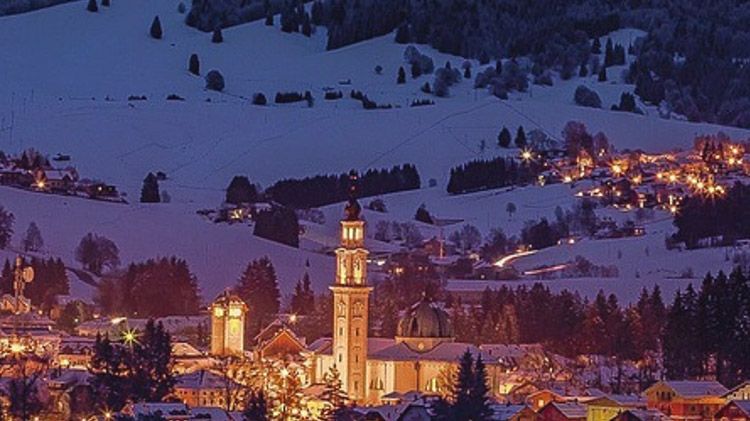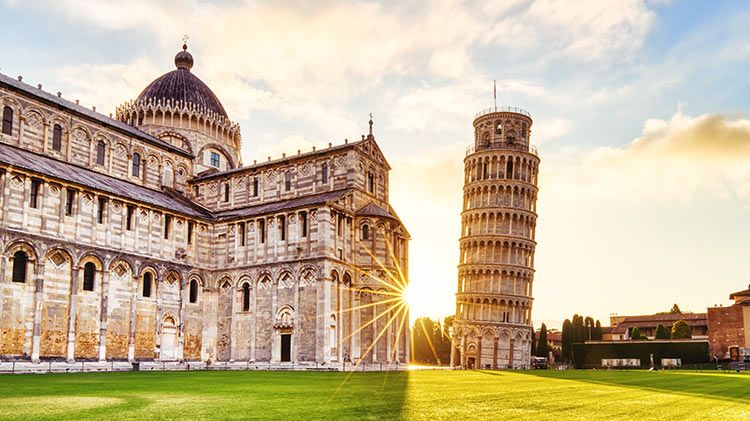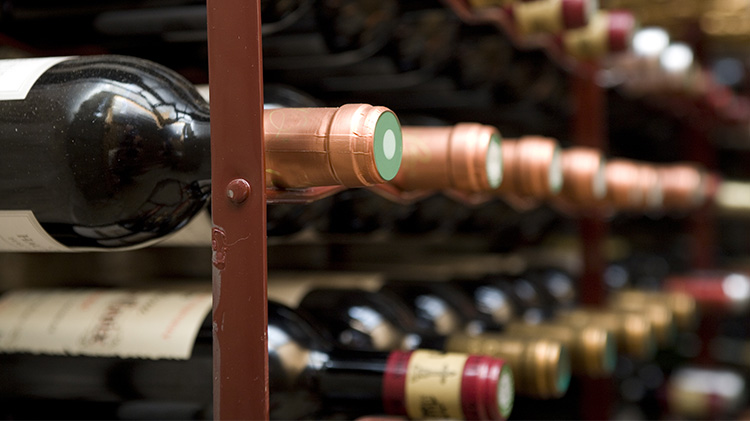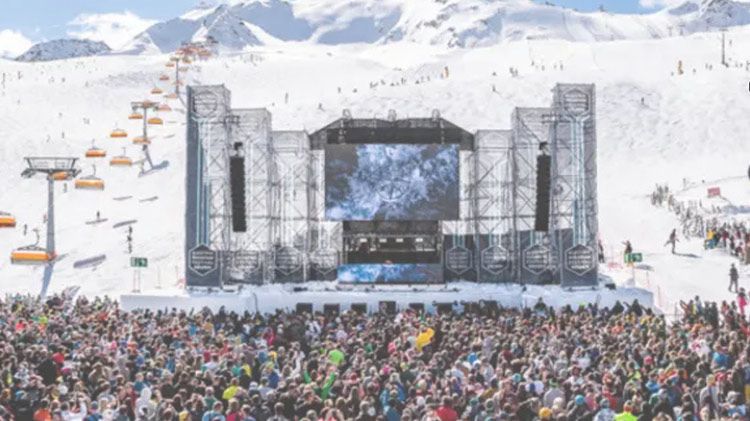- Vicenza - A Newcomers Tour
-
Whether you’re new to Vicenza or just visiting, this itinerary will give you a great tour of the city. It will also expose you to Italian culture, immerse you in history and show you some of the hidden gems. While we’ve laid out a variety of points that might interest you, remember that nothing’s set in stone. You can enjoy this tour whether you’re going from the start to finish or vice versa.
Wherever you go we encourage you to just enjoy exploring! Try and lose yourself in your surroundings and don’t be afraid to find your own paths.
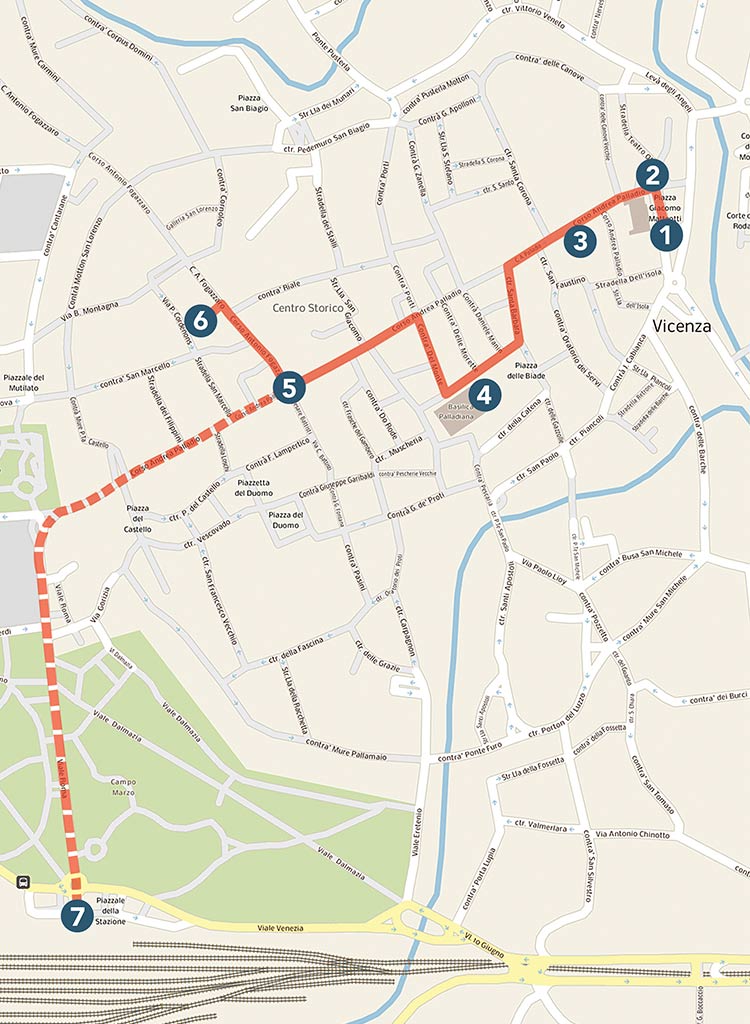
- Piazza Matteotti
A great launching point for our exploratory walk of Vicenza starts in Piazza Matteoti, just a stones throw south of Ponte degli Angeli. To get here, you can park directly in the paid parking lot of Piazza Matteoti, which is safely outside of the Zona Traffico Limitato (Z.T.L.), or what Americans might call a “No Drive Zone.” You can also take the number one bus route from Caserma Ederle’s Chapel Gate (Gate 2) and get off at the traffic circle of Piazza Venti Settembre 1. From here, it is a short one-minute walk to Piazza Matteoti.
As you stand in the piazza facing west, you will immediately see the grand marble building of Museo Civico di Palazzo Chiericati. This Palladian building was a former nobility home but now houses a variety of local art and artifacts. Beyond this villa stretches the rest of Vicenza’s historic downtown city center area, also referred to as the “centro.”
This lengthy stretch of road entering the city is known as Corso Palladio. While you stand at the base of the street, you’ll have Teatro Olimpico to your right. Go ahead and head to the gates of the Teatro Olimpico courtyard where we’ll continue our tour. - Teatro Olimpico
From the outside, the looks of Teatro Olimpico can be deceiving. Groundbreaking for the Teatro Olimpico began in 1580 under the direction of Renaissance architect Andrea Palladio. Palladio’s Teatro Olimpico is considered the oldest covered theater in Europe and also boasts the oldest stage set to survive history.
Visiting hours for the theater typically run from 9 a.m. – 5:30 p.m., and tickets are available at the onsite office located to the right of the main gate. Children under the age of 17 are complimentary, and don’t forget to ask about active duty military discounts. Remember, you don’t need to pay an admission fee to access the historic courtyard which can independently serve as a quiet oasis to relax and enjoy this historic enclave. - Corso Andrea Palladio
After discovering Teatro Olimpico, you will want to continue up Corso Palladio, the main thoroughfare of downtown. Within moments of beginning your walk you will pass by a typical gastronomia, Il Ceppo. Inside you can find authentic prepared
meals traditional to the Veneto as well as local meats, cheeses, wines and much more. Downstairs you will find their wine cellar where glass panels allow you to see the original Roman road remains that once passed through Vicenza.
Leaving Il Ceppo, you’ll continue west on Corso Palladio, heading up the road. Look to the right as you go and you’ll see the Sanctuary of Santa Corona down a small side street. This church was built in the 13th century and is where Palladio is buried. Continue along Corso Palladio for the length of the street to explore shops, but if you’d like to see the main piazza, take a left on a larger street, Contrà Santa Barbara, marked with the typical green cross sign representing a pharmacy. - Piazza dei Signori
As you round the corner from Contrà Santa Barbara you will enter the city’s main square, Piazza Dei Signori. Once the first things you will see are two magnificent columns tracing back to the days of the Venetian Republic and representing Saint Mark and Il Redentore.
The main anchor of the piazza is grounded by the 269 foot tall clock tower, Torre Bissara which was built in the 14th century. Adjacent to the tower is Palladio’s grand Basilica built in the 1570s. Today, the Basilica holds various retail and exhibition spaces in addition to a seasonal rooftop lounge that provides one of the best vantage points of Vicenza’s cityscape.
Historically, Piazza dei Signori served as a central meeting point and marketplace for the local community. Today, the tradition lives on with morning markets taking place every Tuesday and Thursday. For additional information - Corso Fogazzaro
Once you’ve explored Piazza Dei Signori, head to the northwest corner of Contrà Camillo Benso Cavour where you can take an immediate left back onto Corso Palladio. If you wish to see the main duomo take a detour from the piazza to the southwestern corner instead. Here you will see the front façade that dates back to the 15th century –
the only surviving portion of the church from WWII damage. As you continue down Corso Palladio, you will arrive at the main intersection in which Corso Fogazzaro crosses over. Take a right up Corso Fogazzaro to continue exploring more local life, including small shops and a handful of cafes and to find our next stop. - San Lorenzo Church
As you continue along Corso Fogazzaro, you will find the road suddenly open up on the left into Piazza San Lorenzo, equipped with running fountains during warmer seasons. This moderately sized square is home to the Franciscan church of San Lorenzo, built in 1280. It is worth a look inside the Gothic era church to take in its medieval architecture and vaulted ceilings. As you continue to explore the church you will find an interior courtyard where you can experience the quiet cloister garden. Once you’ve finished exploring, you can choose to return to the start or continue along to our optional 7th point, the Train Station.
It’s worth mentioning for future visits that if you continue pass San Lorenzo Church on Corso Fogazzaro, you will find a large paid parking lot off to the right on Contrada Pedemuro S. Biagio. This parking lot is outside the Z.T.L., but pay close attention when driving to and from it to avoid accidentally entering the restricted driving area and receiving a ticket. - Train Station (Optional Last Stop)
From downtown, you can continue to the western end of Corso Palladio and take a left outside the old city gate, heading south on Viale Roma. This will lead you directly to the train station, located on Viale Milano. Train station ticket counters and self-serve
machines are located indoors, and various city bus stops are located right outside on the main curb. Regional trains run frequently to Verona, Padova and Venice. Trains to Milan, Florence, Rome and beyond are available with small layovers. For more information on train ticket pricing and scheduling, you can visit their website at www.trenitalia.com.
- Piazza Matteotti
- Verona - A Four Hour Tour
-
Experience the city of love with us! We have mapped out this itinerary to allow you to see multiple key tourist areas before whisking you off to a path less traveled. Along this path you’ll find some amazing enoteca’s (wine shops) and hidden riverside cafes, followed by panoramic views of the city from the stone steps of riverside Roman ruins.
Take this trip with us and make sure to always be seeking out those hidden piazzas, looking up to see what hidden architectural treasures await and so much more! Verona is beautiful, timeless and overflowing with culture.

- Piazza Brà
Our tour of beautiful, romantic Verona begins as we enter Piazza Brà, Verona’s largest square. Upon arriving in the piazza, you can take an immediate right on Via degli Alpini to visit the tourism office for insightful maps and other visitor recommendations or you can begin to explore the greater piazza. This piazza is grand in size and has a wealth of things to see including bustling cafes along the main boulevard, a tree-lined fountain and the famous, Roman-era Verona Arena. The square itself dates back to the 12th century when it was used for local livestock and timber markets. It now serves for various events, including various markets and festivals that rotate in the piazza throughout the year. The most notable of these is the Verona Christmas market that runs from late November through early January. - The Roman Arena
If you have time, paying for access into the Roman Arena is worth your time. Although the Colosseum in Rome receives more tourists per year, the Verona Arena sits a mere 25-minute train ride away from Vicenza and is the single best preserved in Italy. Historians agree that the Verona Arena dates back to the period between the 1st and 3rd centuries and was built by the Ancient Romans who inhabited the region at the time. Thanks to a large restoration initiative completed in the 18th century, the Arena we see today is considered to be one of the most well preserved ancient constructions in the world. Once used for Roman gladiator fights, the Arena hosts an array of modern day events such as Italian operas and international concerts. Visit their website for more information on tours, upcoming shows and ticket prices. - Via Mazzini Shops
Once you’ve seen Piazza Brà and looked over the Arena, we’ll continue onward from the northern end of the Verona Arena, walking along Via Mazzini. The stretch of road works as the shopping epicenter of the city, speckled with high-end restaurants and delicious gelaterias. If you look down along your walk you’ll notice the light, pink marble that paves the walkway; this is pink marble from the local Valpolicella hills nearby. Take time to stroll casually along this road, taking in the downtown buzz and immersing yourself in the local community. This stretch of road is regularly used by local Italians as they take a casual “vasce,”meaning a time to get out, relax, stroll and enjoy the day. - Piazza delle Erbe
Continue along Via Mazzini until you come to the place where it ends at Via Cappello. Take a left here to enter into the historic Piazza delle Erbe. Believed to be the oldest square in Verona, this area once existed as a town hall platform during the Roman Empire era. Today, it serves as a central market for fresh produce and other local merchants.
As you look to the northern end of piazza you’ll notice the familiar sight of the St. Mark’s Lion, symbolizing citizenship with the Republic of Venice. In front of the column lies the Fontana Madonna Verona – a fountain dating back to 1368. Although the fountain itself is from the 14th century, the Roman sculpture mounted above was created in 380 A.D. Lastly, if you have time, check out the view from the piazza’s tower, Torre de Lamberti which was built by the powerful Lamberti family from the 11th century.
From Piazza delle Erbe you can circle around and through Piazza dei Signori as well as Cortile del Mercato Vecchio, both worth a visit. You can then retract your steps to Piazza delle Erbe. Before continuing on your way to Juliet’s Balcony, we suggest you go under the Arco della Costa and look up. You’ll find a suspended artifact believed to
be a whale rib bone that traces back to an ancient Veronese legend. The legend goes that it is a mark of honesty and that if a truly honest person walks under it, the rib will fall. After this many years without the rib falling it has led to some joking that the Veronese are not generally honest. - Juliet's Balcony
Exit Piazza delle Erbe by returning the way you came. Placing the piazza behind you, continue along Via Cappello. You will walk for about a block, passing Vicolo Crocioni on your left. As often as possible, look for tourism signs listing “Casa di Giulietta.” Shortly after Viocolo Crocioni you will find Juliet’s Balcony on your left. You’ll quickly find countless love letters hanging on the walls leading to an interior courtyard. While William Shakespeare’s “Romeo and Juliet” was a work of fiction, this balcony and it’s statue of Juliet pays homage to the story. The courtyard can be visited for free or you can choose to pay to enter the interior. - Sottoriva / Ponte Pietra
From Juliet’s Balcony you will exit and turn right to retrace steps on Via Capello. After 20 yards take another right on to Via Francesco Cairoli. From here you can stroll through the lush Piazza Indipendenza. At the northern corner of the park the street becomes Via Ponte Nuovo. Right before the river you will turn left down the idyllic Via Sottoriva, following the pink marble path. Sottoriva has various wine bars with amazing local selections to taste. You will also pass the Gothic era Church of Santa Anastasia on your left, entering a tree-filled space along the river with parking spots. Continue straight until you reach Via Ponte Pietra where you will find many waterside eatery options, such as an authentic Italian grocery store (alimentari), Salumeria Gironda, where you can purchase food and then picnic along the Adige River. The salumeria as well as it’s neighboring cafe provide perfect, hidden seating areas nestled along the riverside at reasonable prices any local might pay. Continue north on Via Ponte Pietra to arrive at Ponte Pietra to your right. - Roman Theatre
You’ll cross Ponte Pietra to get an overhead view of the rushing Adige River that shapes Verona’s city center. This is Verona’s oldest bridge and has been rebuilt over the centuries – suffering damage during WWII. As you near the end of the bridge, cross the intersection and ascend the steps on Scalinata Castel S. Pietro. The steps are worth the climb for the rewarding view of Verona’s cityscape and this will position you next to the open-air Roman Theatre, which has existed since 1 B.C. Various concerts perform there today in addition to an interactive archeological museum. You can continue up the hill’s steps to reach the Castel San Pietro for an even higher viewing point. - Alternate Return Route
After taking in the sights from Castel S. Pietro, you can retrace your steps back toward Via Sottoriva, tucking off to the right along Via Don Bassi which soon turns into Corso Sant’Anastasia. You can continue this path to explore more of the city or eventually cut down to your left and return to Via Mazzini to where you began.
- Piazza Brà
- Venice - Travel Like A Venetian
-
To be sure, there is no shortage of information out there about walking the streets of Venice. When we set out to create this itinerary, we wanted to give you a taste of Venice as it once was and to avoid the congested tourism paths and sites.
On this itinerary we’ll walk you through the southern stretches of Venice. We’ll take you along alleys and bridges where locals still shop, where sitting down for a coffee and pastry in a piazza won’t run a small fortune, and where history and culture beautifully fuse together.
A quick side note: for the truly authentic experience, we suggest you try to arrive in Venice before 7:30 a.m. to walk through this itinerary.
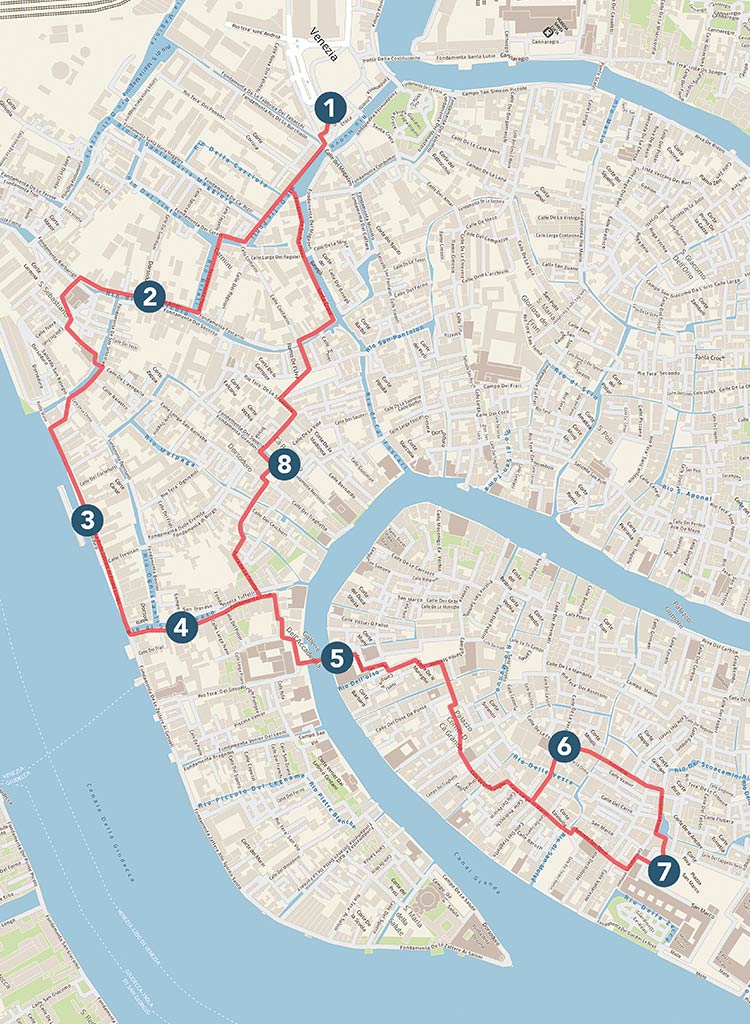
- Piazzale Roma
In this “off-the-beaten-path” version of Venice, we’ll take you along a southern part of the city. This walk will take you through a fraction of the 400 bridges that exist within Venice and will land you in the famous Saint Mark’s Square. Every quaint canal and small alleyway in Venice is worth exploring, and wandering the quiet residential neighborhoods is an authentic way to immerse yourself into true Venetian culture.
Let’s begin in Piazzale Roma: this can be reached when exiting the Santa Lucia train station and turning right to cross over the Ponte Della Constituzione. This route will begin to wind you through quieter neighborhoods and away from the busy crowds. Continue south on Fondamenta Cazziola and cross over a couple of small canals to arrive in the general area of Fondamenta Briati. - Dorsoduro Sestiere
This southwest pocket of Venice is largely residential and naturally more charming versus the typical tourist traffic flow. We highly suggest making a stop in this area to take advantage of a relaxing morning cappuccino and brioche or an afternoon aperitivo in a nearby café. The main island of Venice is characterized by seven main neighborhoods, and here you will find yourself in the authentic Dorsoduro. Continue south to the bottom edge of island, where your view will expand on Fondamenta Zattere al Ponte Lungo. At this point, you will be next to Terminal San Basilio where you can catch ferries that sail to various destinations in Croatia at various prices ranges and at different timetables. - Zattere Views
As you reach Fondamenta Zattere al Ponte Longo, you will be facing south over the large Guidecca Canal in between southern Venice and the island of Giudecca. Historically, Giudecca served as an industrial hub supporting Venice’s booming economy. Today the island serves as a haven for luxury hotels and a nearby escape from crowds. Giudecca is accessible through the water taxi system, known as vaporetto. Compared to the crammed walkways that comprise the majority of Venice, Fondamenta Zattere al Ponte Longo serves as a refreshingly wide footpath paired with sea breezes and space to leisurely stroll. This particular stretch also offers spacious areas to enjoy a meal or to watch water traffic from the greater canals. - Squero di San Trovaso
Continue east along the Fondamenta Zattere, following the path. Once you reach Fondamenta Nani, you will want to cross the Ponte Lungo bridge and then take an immediate left. A short walk further will bring you to the Squero di San Trovaso, across
the canal on your left. The structure you will see is known as a gondola building and repair boatyard. This typical Venetian structure dates back to the 17th century and is one of the very few that actively operate in Venice today. The specialists you might see across the canal working are typically not gondoliers themselves, but expert carpenters and repairmen. Keep walking north as the walkway turns into Fondamenta Priuli and make your way northeast to the Accademia Bridge. - Accademia Bridge
As you climb the Accademia Bridge, you will be met with a storybook view of the timeless Grand Canal, the largest and busiest interior waterway within Venice. History reveals that first mentions of the Accademia Bridge began appearing in the late 15th
century, but the wooden bridge you see today was officially replaced in 1933. From this vantage point, you can also see various traghetto points sprinkled along the large canal. These gondola traghettos serve as a form of public transportation within larger Venice canals where you can pay a couple of Euros to horizontally cross the water in lieu of a crowded bridge. Their interiors are far less ornate than a traditional gondola. As you continue to finish walking the bridge, you will officially cross into in the San Marco neighborhood district. - Campo San Stefano
You will then continue straight after exiting the Accademia Bridge and follow the curving street to arrive in Campo Santo Stefano. This area serves as another spacious haven for walking and taking a rest at one of the many local cafes that face the square’s notable interior. Continue directly east towards Calle Larga Marzo to walk along the many high-end retails shops – this should take about four bridge crossings. From here, take a left and turn north to reach Teatro la Fenice. This landmark theater is a beloved milestone in the Italian opera community. The theater itself experienced three separate fires dating back to 1792, which earned its name “Fenice,” a nod to the mythically resilient Phoenix bird. Performances continue to run today, and tickets are available onsite and online. - St. Mark's Square
From the Teatro la Fenice you will want to begin east along Calle Drio la Chiesa and weave your way towards San Marco Square.
Once you have arrived in San Marco Square you will have reached one of the main tourist draws in the city. This vast piazza frames St. Mark’s Basilica to the east and the Doge’s Palace to the south. Visiting St. Mark’s Basilica is free. Inside you will find Byzantine style architecture and intricate mosaics from the 11th century. The nearby Campanile bell tower does have a cost to go up but provides a spectacular view of the square as well as Venice as a whole.
To get a unique view of San Marco Square you can head to the west end of the Square where our tour brought you out and visit the Museo Correr. You can access the museum’s café without paying for full museum admission. From there you can order
a coffee and take in a unique bird’s eye view of the historic square away from the crowds. Please be aware that in San Marco Square (as with any tourist destination) standing at a café or restaurant will usually be a lower price but sitting down can results in a significantly higher prices for the same service.
As you exit the café, feel free to check out the tourist information office adjacent to the museum for additional maps and sightseer information. - Campo Santa Margherita
Retrace your steps back from San Marco Square southeast to the Accademia Bridge to cross back into the Dorsoduro district. After you walk back over the Accademia Bridge, turn right and snake your way towards the Ponte de le Maravegi. You will continue north on Calle Della Toletta to make your way northwest over various bridges to arrive at Campo Santa Margherita. Due to its proximity to the nearby Foscari University of Venice, Campo Santa Margherita holds a young and hip vibe with no shortage of local bars and cafes. This campo, meaning “field”, is a quiet option to unwind with aperitivo or coffee to rest your feet after a long day of exploring Venice’s rich history and culture. From here you will continue back to Piazzale Roma where our tour ends.
- Piazzale Roma
- Treviso
- Hiking the 52 Tunnels
Please note:
This page is always expanding to better serve the needs of our customers. Please keep checking back as we plan to include itineraries for:





